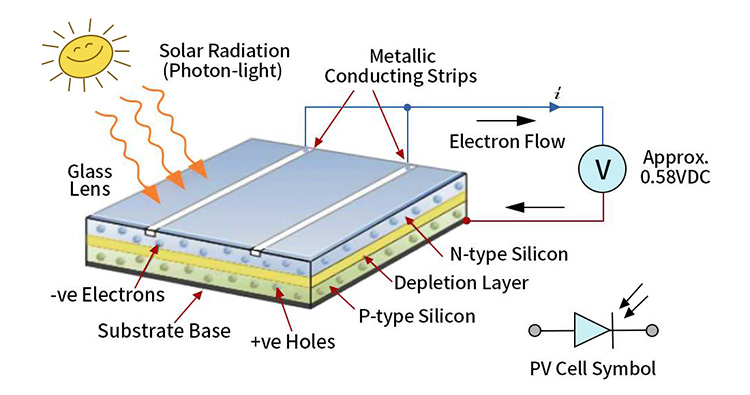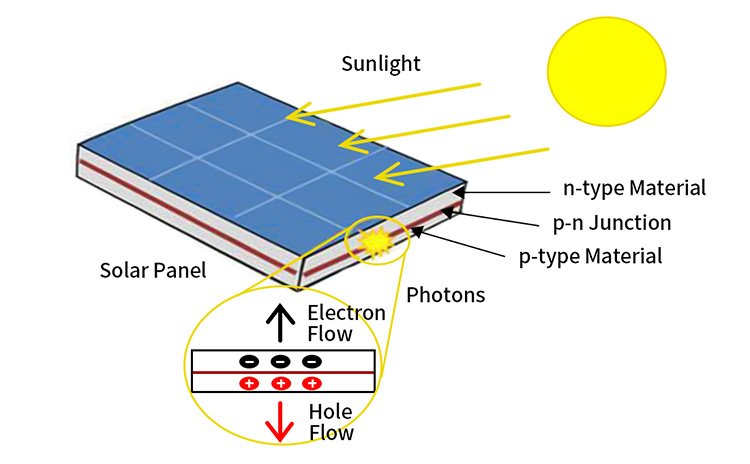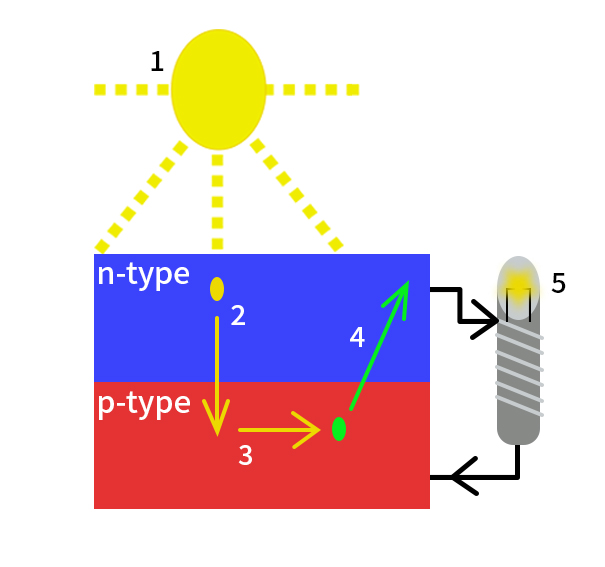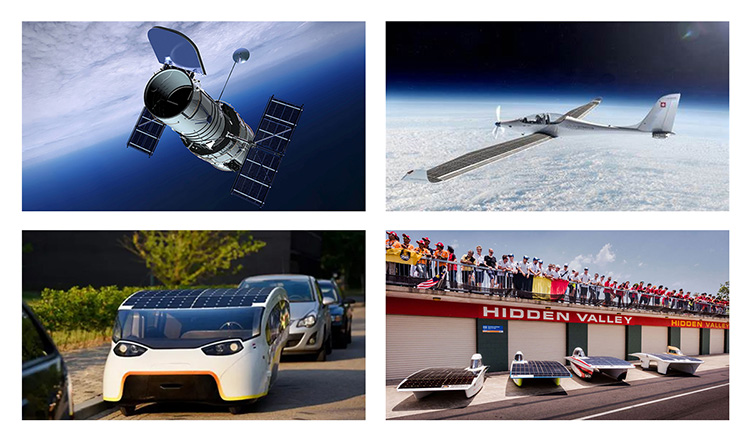Solar Cell Basic
A solar cell, or photovoltaic cell, is an electrical device that converts the energy of light directly into electricity by the photovoltaic effect, which is a physical and chemical phenomenon. It is a form of photoelectric cell, defined as a device whose electrical characteristics, such as current, voltage, or resistance, vary when exposed to light. Individual solar cell devices can be combined to form modules, otherwise known as solar panels.
History of Solar Cell:
- The term "Photo" comes from the Greek meaning "light", and "voltaic", from the name of the Italian physicist "Volta".
- The "Photoelectric efeect" was first recognized in 1839 by French physicist A.E.BECOUEREL.
- ALBERT EINSTEIN explained the photoelectric effect in 1905 for which he received the Nobel prize in Physics in 1921.
- The modern photovoltaic cell was developed in 1954 at BELL LABORATORIES.
- The highly efficient solar cell was first developed by DARYL CHAPIN, CALVIN SOUTHER FULLER and GERALD PEARSON in 1954 using a diffused silicon p-n junction. Solar cells were first used in Vanguard I satellite, launched in 1958.
The theory of solar cells explains the process by which solar power energy in photons is converted into electric current when the photons strike a suitable semiconductor device. The theoretical studies are of practical use because they predict the fundamental limits of a solar cell, and give guidance on the phenomena that contribute to losses and solar cell efficiency. Solar cells are described as being photovoltaic, irrespective of whether the source is sunlight or an artificial light. In addition to producing energy, they can be used as a photo detector (for example infrared detectors), detecting light or other electromagnetic radiation near the visible range, or measuring light intensity.

The Solar Cell Works in Several Steps:
- Photons in sunlight hit the solar panel and are absorbed by semiconducting materials, such as doped silicon.
- Electrons are excited from their current molecular/atomic orbital. Once excited an electron can either dissipate the energy as heat and return to its orbital or travel through the cell until it reaches an electrode. Current flows through the material to cancel the potential and this electricity is captured. The chemical bonds of the material are vital for this process to work, and usually silicon is used in two layers, one layer being doped with boron, the other phosphorus. These layers have different chemical electric charges and subsequently both drive and direct the current of electrons.
- An array of solar cells converts solar energy into a usable amount of direct current (DC) electricity.
- A solar inverter working principle is converting direct current (DC) electricity generated by solar panels into alternating current (AC) electricity usable in homes and the grid. It regulates voltage, frequency, and phase to match grid standards, enabling efficient energy transfer and utilization. It also tracks maximum power point to optimize energy production.


- When sunlight shines on the cell, photons (light particles) bombard the upper surface.
- The photons (yellow blobs) carry their energy down through the cell.
- The photons give up their energy to electrons (green blobs) in the lower, p-type layer.
- The electrons use this energy to jump across the barrier into the upper, n-type layer and escape out into the circuit.
- Flowing around the circuit, the electrons make the lamp light up.

- Space. Solar cells are very useful in powering space vehicles such as satellites and telescopes (e.g. Hubble). They provide a very economical and reliable way of powering objects which would otherwise need expensive and cumbersome fuel sources.
- Solar powered vehicles. Solar powered cars are cars which are powered by an array of photovoltaic cells. The electricity created by the solar cells either directly powers the vehicle through a motor, or goes into a storage battery. Even if a vehicle is completely covered in solar cells, it will only receive a smaller amount of solar energy and will be able to convert only a small amount of that to useful energy. Because of this, most solar powered vehicles are only used in research, educational tools or to compete in the various races for solar powered vehicles.